SIMULACRUM
Andreas Höflich
Walter Benjamin's text
"The Art in the Age of Mechanical Reproduction" 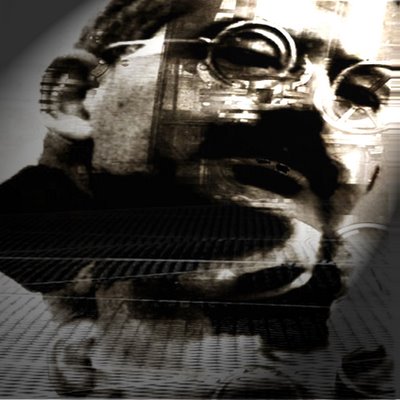 and its importance to the aesthetic theory
and its importance to the aesthetic theory
first Introduction
second The artwork and the loss of his aura
third Adorno and the concept of aura
4th Movie Jean-François Lyotard
5th Conclusion 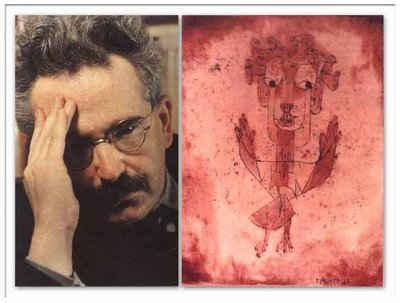 6th Bibliography, footnotes
6th Bibliography, footnotes
first Introduction have tried early philosophers and musicians, on the one hand, set standards and a canon of that "what is beautiful than music" to see is on the other musicians gave their music a scientific basis, partly as an explanation in part as justification. trying to be the most important texts in this work The work of art "in the Age of Mechanical Reproduction" (1) by Walter Benjamin to bring in relation to aesthetic texts which relate to the music. Benjamin's work, the more lamented the loss of aura in terms of visual arts such as photography, film or painting and fine art, but for the reception of music in the so-called postmodernism of importance. As important in this context appeared to the author of interdependence to be published later in time with lyrics. Similar in their approach is crystallized out of essays called post-structuralists or post-modernists, received explicitly and in detail to the music as a form of artistic expression. The question is to investigate is to what extent the reception of music with the possibility of technical - and - changes infinite reproduction, and if so, whether this new front is also on the to be considered to work effect in itself. The situation in which modern man reception are music has changed with the media of sound recording. The situation had gone into the music listeners in the nineteenth century, differs fundamentally from that of the music lover in the twentieth Century.
Was the recipient in the last century efforts in the concert hall, or the music played at a house music night, so the modern individual can listen to music whenever he wants and in any situation that is different probably immensely by the composer for the sounding of his music has devised or desired. After the publication of his work as a CD, he has no further control over its composition. The ritual character of the music, the religion similar to the music, Wagner drove his Festspielhaus to perfection has come to live in modern times, people lost. The question now is how this situation on the work of art even effect and whether the part of the philosophers were ambitions, if not to fight this development - which would be a futile exercise - as it attempts to explain to do to this fundamental change in regard to the availability of art in their considerations contribute.
second The artwork and the loss of his aura
The text of Walter Benjamin describes in the year 1935, the drastic changes in the workplace through automation and capitalization affecting a time delay to the field of art. This change - in its economic rationale and the socio-political context - Is the subject of Benjamin's analysis. The thus extracted by Benjamin "tendencies of art under present conditions of production" (2) are dominated by one phenomenon: the "decay of aura" (3).
as bundling of various changes that happen to the Art in the Age of Mechanical Reproduction, this expression is necessarily ambiguous. "The here and now the work of art" (4) as a historic vehicle, which accounts for its authority and authenticity that is lost through reproduction.
Benjamin sent forward that works of art have always been reproduced, but as an exercise of students, and To disseminate the works of masters. Even music has always been reproduced as a tradition, so only the score was available. The entire area but the authenticity is beyond the technical reproduction. According to Benjamin, the manual reproduction shall be against the "original" maintained his authority. For the technical this is not the case because the original is self-employed compared to when the manual. This is based on two things:
- The technical reproduction can highlight such as the views of the original photograph, only the technical lens are not visible to the naked eye.
- you will meet with the host, the recipient. The record music brings the listener into the apartment, which was actually performed in a concert hall or a cathedral.
"The circumstances in which the product of mechanical reproduction can be like, let the rest of the stock untouched piece of art - they devalue in any case, the here and now" (5) A recording of an artistic composition, plus artistic. executed, there is still a "document" of a moment that touches not the work of art in its collection. However, it is only a document and not the artwork itself
What continues to be lost is the "authenticity" (6) of a work of art, the epitome of his material life and their history is witness. Thus, the technical reproduction can be induced by the "authority of the thing" (7) to falter. The authenticity in turn has its foundation in the ritual in which the artwork had its original use value. Benjamin understood now all these loss phenomena in the notion of loss along the aura. "The reproduction technology could, then put it more generally, what is reproduced from dissolved from the realm of tradition. Reproduced by the reproduction, it shall take the place of his unique presence to be a mass scale. "(8)
Another aspect of the aura, that is their perception, is also described. Way to win in the context of the thesis, dealing with the historical change of perception employed in the above definition, the word "appearance" of particular importance. It is a subjective feeling of uniqueness and distance. must be "The decadence of the" aura that is associated with the break at least one of these two pillars of their reception. Benjamin sees both undermined. "The things spatially and humanly> closer to 'is a just as passionately about the current masses as it is their tendency to overcoming the uniqueness of each condition by including their reproduction" (9)
- the cult value.
- the exhibition value the work of art.
A sacred work of art was first set up the function that it was made in honor of God, in second place there came to his viewing, if at all. The technical reproduction now Austellbarkeit a work of art has increased on a vast extent. Earlier was the weight on the cult value of an artwork, only on its artistic value. What counts now is the first exhibition value of an artwork, its artistic value can be recognized only later / random. The for magic and religion is the work of art always has a "secular beauty services" (11) committed was, does this definition, no harm, since he is also a form of worship, still rely on the uniqueness of the artwork, as these their scale, the authenticity reasons. The aura is described here so as a mediator of traditional artistic value. This is destroyed with their destruction by the reproduction - the cult value loses significance, while the exhibition value more dominant is, until he "[in] the photograph of the cult value all along the line [...] push back" (12) begins. The theories on mass action as the movie are not here brought into consideration because the focus should be directed that work on the impact on the music and music-philosophical considerations.

third use Adorno and the concept of aura
Without the concept, has Adorno to the problem that is mentioned in Benjamin's iconoclastic thesis in 1938 in his essay "On the Fetish Character in Music and the Regression of Listening" (13 ) expressed. In dealing with the new consumer culture, he comes here a finding which should be mentioned in Benjamin's language of music in a loss of the aura. Adorno is much more than Benjamin the importance of music as "goods fetish" dar. While Benjamin tried to seek means of the terms "cult value" and "exhibition value" terminological equivalents for the political-economic terms of use and exchange value, analyzed Adorno in his early essay, the music completely undisguised as a commodity. The change in attitude towards the reception of art that Benjamin described as a "distraction" is the name, Adorno "devolution" and so already indicated his pessimism. What that occasion for political optimism , it means this is an indication of the deteriorating state of the world. Furthermore, results from Adorno a polarization of the spheres of art: the separation of the aesthetic realm of great art as a place of autonomy and cultural industries, as a region where respect for the laws of the market every utterance. In Adorno, Benjamin's idea of contemporary art experiences by Adorno's application to the music to a head, with as much growth of differentiation on the one hand, such as loss of differentiation is accompanied on the other side. The total disregard of the aesthetic moment in popular music should be strengthened with a view of the systematic design, the "autonomous" art world, in return, to make well-understood. Nevertheless, the paper must remain unsatisfactory.
The analogy between society and music, economics and music, psychology and music, is set without any attempt to transform or even a methodological explanation. The critical problem that confronts any attempt at a sociological or economic explanation of the art - the ways to reconstruct the immigration of companies in the art without also losing the aesthetic character of the phenomena from the view is not even here from Adorno not perceived. In other words, the problem of 'mediation', which here remains unresolved - even without processing.
engages in his Aesthetic Theory Adorno now the idea of the aura again and criticizes Benjamin's methodology. With the dichotomous comparison of the aura and the technically reproduced work of art he neglects to their drastic sake of the dialectic of both types. For it makes the original character of the work of art not from the aura, for him it is not based on one-off material, but on aesthetic uniqueness and thus the quality criterion of great works. Furthermore, he refers to the challenge Benjamin's fascist art policy. The resistance to the social power would in his view not in the adaptation the art - it had also advanced - social purposes, but rather in the preservation of aesthetic autonomy as a position of humanity to exist. He also denies precisely the decay of an aura.
What initially may seem like a loss appears, from the distance of reflection as an integral moment of a dialectical opposition unity. For Adorno, the "Entkunstung of art is not" the stage of liquidation, but a factor of its dynamics. The decay of the aura he points to as her reflection moment. Benjamin laments the decline of the aura, and thus the decline of art, represents the decay of the aura is not the end, but rather the essence of the aural phenomenon dar. For him the extinction of the phenomenon itself has the character of a phenomenon of the extinction of the phenomenon, and this makes her always to be complaining the transience "content" from the art. He is the great art is not lost. What he calls, following Benjamin aura is, it a priority feature of aesthetic autonomy. From the preponderance of technical culture, which is recognized by both in its ambivalence, concludes Benjamin loss of subjectivity of art, Adorno speaks against the work of art representing the human cost so much more to're all even still possible subjectivity. Adorno argues against Benjamin neither transcendental philosophical, nor anthropological but "dialectical. The idea of the cancellation, a moment that he, following Hegel to understand the relationship between art and society is always a claim is relevant for him.
4th Movie Jean-François Lyotard "In his article something like" communication without communication '"(14), the French philosopher Jean-François Lyotard deals with the problem of the changing reception or communication between the artwork and recipients in the modern . Based on two diametrically differing quotes from Adorno and Immanuel Kant, dealing with the concept of communication, Lyotard presents the following question: "The question I would like to dramatize is: what about an hour without a communication concept, where the methods of the Art Products" of technologies precisely without the massive intervention of the concept of hegemonic and can be made "(15) The term" communication without it derives from the concept of communication Adorno, which - as Lyotard - the idea implies that "feel if there is art as a communication, this must be without term. [...] There is a thinking of art that is not thinking of non-communication, but not the conceptual communication. "(16)
Adorno's approach, the opposite the above-mentioned contradiction in the tradition of Kant is, in turn, connects the indirectness of art with a sense of beauty inseparable aims precisely to the front of the artwork. According to Lyotard, Kant distinguishes the sense of beauty of other emotions, including the feeling of the sublime and demands so that this feeling must be transitive. It must be a feeling that the work of art is inherent and can be recognized by the recipient, but does not need to find delight in Him. This transitivity is, according to Lyotard in judgments of taste at the same time "claimable and necessary" (17) so that there is art. Now the question is how this can convey the Work of art and its perception of the situation effect. This communicability is "in the singular include aesthetic sense, and this singular aesthetic sense is the immediate, that is undoubtedly the purest mode of a sensitivity to space and time (as necessary forms of aisthesis). Can preserve that communicability if the forms are to be their cause, either in their production or in transferring them to determine conceptually? What about the aesthetic feeling when situations calculated mean aesthetically? "(18)
The categories of space and time are no less the Benjamins, namely the Here and Now meant. In comparison, however, Benjamin appears on the surface of the problem to stay if Lyotard derives its scientific reasoning. An important point of argument for him, the contrast between susceptibility (passibilité) and activity, but he questioned critically. We are sensitive, because something happens to us, we did not previously controlled, programmed, or have conceptual experience.
"The feeling is the immediate reception of what is given. The works are the new techne either been in their production and / or its reproduction or determined only in their distribution by one (or more) calculus (e). This necessarily leaves Tracks ... "(19) Lyotard means by these calculations the time, but time in the manufacture, production and distribution, etc. of the artwork used. An aesthetic sense it seems to be impossible if it only from the calculated representation shows, that pays homage to the industrial reproduction like no other development. If the following categories as analog goes to Benjamin's here and now, the following sentence can be congruent to understand Benjamin's theses: "... what is in the modern or postmodern, perhaps affected first and complain leaves are space and time" (20. ) can
In terms of the debate about postmodernism to say that it represents a continuation of modernity in terms of reception of the artwork. At the beginning of the 19th Century, be the set of Hölderlin, "In the extreme limit of suffering there is nothing more than the conditions of time or space," the discussion. For Hegel, who believed discover the "end of art" (21), these categories are already resolved, as it shows that space and time, its truth not in itself, but about to have, "that it is not here and now that there is only perception, that the sensuous is always mediated by the mind "(22) Lyotard goes further in his interpretation:". Go in this; the conditions of space and time concerns (and in two forms, namely the modern: there remain only space and time, and the postmodern: we remain even more space and time) ... "(23) Benjamin took so therefore with his arguments, ideas and problems of post-Modernism. The magic word of the interactivity of art that is called for in the engineered time more and more attacks, as it relates to the reception of music. According to the Lyotard, "receives not received, could not be upset. He is to constitute itself as an active subject in relation to what he enjoys. Be reconstructed directly and as someone who intervenes to identify " (24) The susceptibility in connection with musical works of art but an interaction is extremely difficult, here she was in the concert situation even more possible, because as a receiver of a technically reproduced work of art. The susceptibility rather an emotional community is outlined, which derives its sense of community from the singular aesthetic feeling. In a concert hall for example, arises from the perception of each visitor a sense of community, which is mediated by the categories of space and time, which the visitors also do not have to be aware of. This emotional unanimity is not loud Lyotard dependent constituted by the shape of the sitter or the form of representation, but solely from the mode of reception.
"In his essay" Obedience "(25) Lyotard describes the possible implications that the possibility of technical reproduction of a work of art - can have on the musical material itself - here the music. He speaks of the rights and wishes that the new technologies can log into the world of sounds that can not necessarily relate to the human partner but also intrinsic to the material can be, "... may" are also rights and aspirations of the material or the sound. (26) According to Adorno's work is a mystery and it must remain so, what it represents and brings in a tangible form is the technology. The "unleashing" of the material, who is also an exemption from paternalism opened, according to Lyotard the perspective of control of the sound by the technology. This hypothesis would offer an opportunity then, could meet in the music and technology. The penetration into the material, which can be displayed with the electronic music probably best, is an integral part of the musical composition of postmodernism. It is music without the embellishments mantle of tradition, it has freed himself from her because she has no tradition. Here, the music returned to what they most deeply , namely the vibration of the air "with her in turn analyzable components. frequency, amplitude, duration, and some finer, namely the color, the kick-off" (27)
The back can succumb to pitch, key and scale that the "unleashing of sound, "brings with it, however, is not a new endeavor. Even Mozart tried, including the Turkish music to new sounds and keys to open up. Just as later Debussy with the help of the Burmese gamelan music, which places special emphasis on the percussive sounds. Lyotard discussed to illustrate the problem of chromaticism, which must not be communicated by a form but himself arranges for its matter.
"and assign the chromatic values, without being organized by a concept, not even by a term which it derives. The beauty, if I may dare to use this expression, obtained by this self-purposefulness without purpose. "(28) The" unleashing of sound ", for example, Varèse only on the phonetic level refers, can be so in this context, the paradigm shift in the music to the total material use, even, as here on the scales. Turning to 'free form' (a contradiction in itself, because it is not a form anymore, but for lack of other terms and in use of this Term, he is allowed here) is thus not only, as Lyotard notes, the "liberation of the large, by the tradition of accredited musical forms in the main by the sonata form" (29) but also concerns the treatment of musical material as such, namely as material that formed itself into itself ", without taking into consideration traditions relating to it. Music as a musical art of the music tries so as to release music and does so again in the canon of science, under the septem artes liberal, to which they were counted in the Middle Ages in reference to the Greeks. Together with mathematics, geometry and astronomy, it belonged to quadrivium. Whether they turn to the substance, by using as few minimal resources, or as happens in many complex structures, in principle, makes no difference. It is possible to filter out two basic trends. The one that allows the sounds to be simple, like Cage, or the other, by the excess of the listening habits of complex structures destroyed and a new hearing out of music. has Lyotard sees this as an opportunity, "brings to a natural state of listening, the loss of the musical culture to return." (30)
5th Conclusion
Starting from Walter Benjamin's The Work of Art "in the Age of Mechanical Reproduction," from 1935 and the subsequent discussion with Adorno shows that the considered as a negative momentum change in the technical possibilities, starting from pure reproduction He has written works of art existing in the artworks themselves. 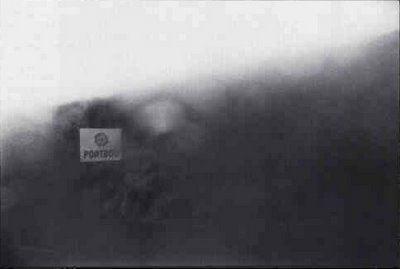 Benjamin Viewed development of reproductive media and the impact they have on the work of art rather pessimistic and complaining that looks, according to Adorno in them more of a chance. Adorno saw the unleashing of the material on the form - implying that the new technical possibilities - more of a possibility of increasing it to master technically. Benjamin's approach to the comparison of Aurat and reproduced art is so far one-dimensional, because it ignores the dialectic of both terms for simplicity. Adorno, however, considers the two terms on the basis of dialectical and thus bypassing the misinterpretations Benjamin succumbs.
Benjamin Viewed development of reproductive media and the impact they have on the work of art rather pessimistic and complaining that looks, according to Adorno in them more of a chance. Adorno saw the unleashing of the material on the form - implying that the new technical possibilities - more of a possibility of increasing it to master technically. Benjamin's approach to the comparison of Aurat and reproduced art is so far one-dimensional, because it ignores the dialectic of both terms for simplicity. Adorno, however, considers the two terms on the basis of dialectical and thus bypassing the misinterpretations Benjamin succumbs.
of utmost importance in dealing with art in the modern era, the change in reception has crystallized it. That you never lose the categories of the here and now of the artwork, which are the outstanding elements of the aura in Benjamin, in Lyotard critically, as categories that receive an ambiguity since Hegel. They were never fixed sizes, but always terminated by the perception.  Based on the theories of Benjamin but also become even more clear that in the so-called post-modernism, the changes in production and reception conditions, its impact on the musical material itself have. Here are changes of forms, such as the emergence of the "radio composition" as a commission that will be affected by the transmitter due to budget or personnel issues in a superficial and an obvious example. Much more in depth material on the go changes that can be exemplified in the electronic music. The unleashing of sounds, which relates not only to the sounds, but also the unleashing of the form and all other ingredients, here is probably the most complete and is carried out still further.
Based on the theories of Benjamin but also become even more clear that in the so-called post-modernism, the changes in production and reception conditions, its impact on the musical material itself have. Here are changes of forms, such as the emergence of the "radio composition" as a commission that will be affected by the transmitter due to budget or personnel issues in a superficial and an obvious example. Much more in depth material on the go changes that can be exemplified in the electronic music. The unleashing of sounds, which relates not only to the sounds, but also the unleashing of the form and all other ingredients, here is probably the most complete and is carried out still further.
The emancipation of the material of the form - and thus on the musical tradition - is the logical dramatic development in the Music and in art generally, and perhaps open up, based on the theories of Benjamin and Lyotard to a new vocabulary for discussion of new music or music in general. 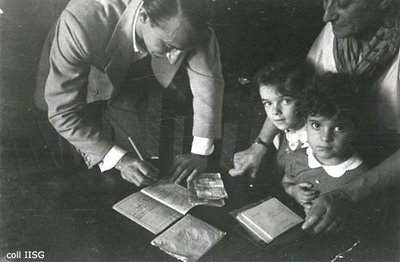
6th Bibliography 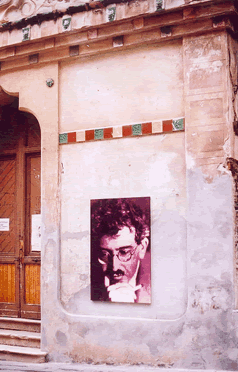 Adorno, Theodor W.:
Adorno, Theodor W.:
Journal of Social Research, ed. by Max Horkheimer, Year 7 (1938), reprinted Munich, 1980, 321-356. 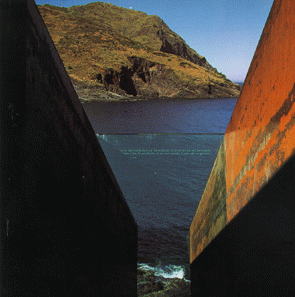 Benjamin, Walter: The
Benjamin, Walter: The
Art in the Age of Mechanical Reproduction , Frankfurt / Main (Suhrkamp), 1968 (2nd edition).
Lyotard, Jean-François:
something like communication without communication , in: Engel, Peter (ed.):
Jean-François Lyotard - The Inhumane, chats over time
, Wien (Edition passages), 1989
Lyotard, Jean-François:
Obedience Wien (Edition passages), 1989
footnotes 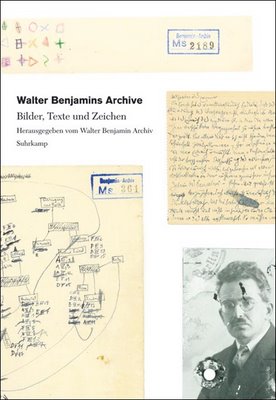 first Benjamin, Walter: The
first Benjamin, Walter: The
Art in the Age of Mechanical Reproduction , Frankfurt, 1968, 2 Edition. (All further quotations from this work relate to this issue.)
second Benjamin, p.9
third Benjamin, p.9
4th cit., p. 11
5th cit., p. 13
6th cit., p. 13
7th cit., p. 13
8th cit., p. 13
9th cit., p. 15
10th cit., p.17
11th cit., p.17 12th cit., p.21
13th Adorno, Theodor W.:
Journal of Social Research, ed. by Max Horkheimer, Year 7 (1938), reprinted Munich, 1980, 321-356.
14th Presentation at the first colloquium Art et Communication , Paris 1986th
15th I refer in this work to the German translation: Lyotard, Jean-François,
Something such as communication without communication
, in: The Inhumane
.  chats over time. Ed Engelmann, Peter, Edition Passagen, Wien, 1989.
chats over time. Ed Engelmann, Peter, Edition Passagen, Wien, 1989. 16th Lyotard,
communication without communication
, p. 190
17th ibid. p. 190
18th ibid. p. 192
19th ibid. p. 192-193
20th ibid. p. 194
21st ibid. p. 195 22nd ibid. p. 199
23rd ibid. p. 199
24th ibid. p. 202
25th ibid. p. 203
26th Contribution to the colloquium
that organized at the initiative of Christine Buci-Glucksmann and Michaël Levinas, in June 1986 by the Collège international de philosophie and the Itinéraire at the Sorbonne was. Published in:
InHarmoniques 1, 1987. I refer in this work to the German translation: Lyotard, Jean-François,
Obedience
, in: The Inhumane
.
chats over time. Ed Engel, Peter. Edition Passagen, Vienna 1989.
27th ibid. p. 285
28th Lyotard,
Obedience, p. 279
29th ibid. p. 285
30th ibid. p. 290
31st ibid. p. 291 32nd . Ibid: p. 298
© 2000 by Andreas Höflich
into exile Walter Benjamin and Raoul Hausmann in Ibiza
Questionable "perfection on the edge of the invisible"
Walter Benjamin, who interpreted the trips as an escape from the failure as well as an opportunity to transform understanding, held during the early 30's twice on the Balearic island of Ibiza. According to Benjamin's thinking, the island is a part, to canvas for a wide range of culturally coded images for which consulted the cultural theorist striking images of Gauguin. On the other hand, appears as Ibiza Arkadi image lurks in the heart of death. Thus, for the storm-tossed island in the Mediterranean character of the political hazardous events to recognize National Sozialistenn Germany. Analogous to Benjamin's image island of Ibiza staged novel Raoul Hausmann's long forgotten dream pieces that deconstruct as provocative as aggressively as the island of purgatory and paradise of love. "Ibiza is: Nothing. Nothing more. . Only Dream "
Sofie Kluge of the most ambitious and most complete expression of allegorical interpretation and text theory, in which the most important legacy was Walter Benjamin. Her essay explores the concept of a philosophically predisposed, but historically rooted and text interpretation theory, set out in the epistemological preface, in which the allegory of the section allegory and tragedy. The allegory is not only a key to the aesthetic form that the object of investigation is Benjamin's (that is the tragedy) is read, but also as an allegorical practice, which forms the background of Benjamin's theory of interpretation. To this connection between the theory of interpretation theory and the text to illustrate Benjamin, Kluge points out one aspect of the methodological problems of the preface, namely, the parallelization of contemporary art theory discussion with the so-called universals between realist and nominalist in the Middle Ages. The various aspects of this schism are to Kluge particularly to describe the fundamental opposition of the preface between Benjamin's key concepts of representation and origin as an expression (although greatly moderated) realist position, and the contemporary neo-Kantian and empiricist influenced theory of art as an expression of modern nominalism . At the same time, declared in its view, the focusing the updating of the universals Benjamin otherwise puzzling> theory of ideas' of the preface and connects them to the allegory that the two languages on the same issues are related.
order. Timeliness is on him a mystical concept. can get this thing to date, is needed as to permit blasting. If any does this work? It is either the artist or the history of revolutionary proletariat. Both contain the power in their own way of helping history to date.
The flash flood, called apocatastasis, with at Benjamin mortgaged the redemption work of the past, the present results, the stage of perfection to the "image space" perfect date, which is identical with the arrival of the "Messiah," the salvation of the classless society. The artist is thus a function of history, to understand the whole only theologically is. It is, however, contemplative not cope and they can be met only in the context of revolutionary practice. This practice in turn, is already in its KP-Marxist, and certainly in its social-democratic constitution involves severe deficits: it was based on a teleology and an idea of progress, pointing to a secret positivism. This is to penetrate the anarchist and destructive bottom gesture of Benjamin's thought. The program, the continuum of history, as it spreads historicism epic, break open, Benjamin wants to encourage revolutionary potential spill light. He is still the story to "dialectical images" break out of it. Benjamin drilled this exercise using the tragedy in the Baroque, early romantic theory of art, using the "visions" of the period, and Surrealism.
In the late thirties, when the war preparations of German fascism and the weakness of his opponents were obvious, as the Moscow show trials, and finally the Hitler-Stalin pact shocked the Western European intelligentsia, formulated Benjamin a critique of historical materialism, the current political explosiveness had.
Today we read it in a changed aspect, whose historical significance is no less significant. Benjamin provides explicit in the much-discussed first of his theses "On the Concept of History, omitted in Marxism, a dimension which he summarized in the term theology
" As is known to have been a machine that was designed to compare each train a chess player had replied with a return that secured him the prize of the lot. A puppet in Turkish costume, a water pipe in his mouth, sat before the board, dasauf rested a large table. Through a system of mirrors, the illusion was created that this table was transparent from all side. In fact, a hunchbacked dwarf was sitting in it, was a master in chess and turned the hand of the puppet on strings. To this apparatus can be a counterpart in the philosophy imagine. Winning is always the doll, called 'historical materialism'. look you can compete easily with everyone, if they take theology into its service, which is now known to small and ugly and should not anyway. let (I, 693) Without the dimension of the "dwarf" represents predicted Benjamin slipping off the world-historical revolutionary practice in an affirmative Progress confidence that have led to the disaster.
far, so good / bad. In 1990, it requires no special indication that the decline of Marxism in the history of disaster flows is introduced. If today flies in the GDR State Council building, the Federal flag, the Soviet Union must bring their economy capitalist positions, the Marxists are all over the world rely on fundamental revisions - which emphasis is placed on the Benjamin's objection?
attempt towards an answer by Jürgen Habermas in 1972 acquired by the events in Eastern Europe, a new controversy:
"... Benjamin's critique of the empty progress is aimed against a joyless reformism, whose sensorium is already numb to the difference between the improved reproduction of life and a fulfilled life, we tend to say a life that is not missed is. (...) You are talking only of doubt, of the doubt, the semantic Benjamin's materialism suggests: we can exclude the possibility of a meaningless emancipation? Emancipation means in the complex societies participatory transformation of administrative governance. Could one day connect an emancipated human race in the advanced game rooms discursive will formation in front of and yet be deprived of the light in which it interpreted his life as a good compliant? The revenge of the legitimacy of rule over the millennia exploited culture would then, at the moment of overcoming age-old repression, is that they would not use force, but no more content, without the supply of those semantic energies, where Benjamin was saving criticism, would have to finally reaching consequences enforced depopulation structures of practical discourse. (...) Because under historical circumstances that prohibit the idea of revolution and suggest the expectation of long-lasting transformation processes themselves must also transform the idea of revolution from the educational process of a new subjectivity. This may Benjamins conservative revolutionary hermeneutics, which deciphers the history of culture, a wise way. "(1)
The swelling of the literature on Benjamin in recent years been taking Contours of a disease image. This implies that the disease itself is also analyzed: a large space within this busy Elephantiasis the question of how the fascination Benjamin could be explained. Hosts of European and American intellectuals to work out in the quarry Benjamin profiles in which they recognize themselves. There is no reason to denounce this process. Benjamin's own network is an invitation: it is open to extrapolate to all sides. This peculiar structure of openness not only explains the current attention, but, perhaps, the contempt in his lifetime. So between genuine interpretation and misunderstanding no longer differentiate, Benjamin is the exponent of the postmodern "anything goes"? Rewarding than the answer to this question may be the realization that the interpretable in many directions, or better put the almost unlimited possibility, the very different aspects of his thought in a seemingly endless variation to correlate, deep down into the secrets of his work. We follow this idea, then stands in his never reach the center if possible from the truth that none of the many thousands of multiple interpretations points the way to the "true" Benjamin, that the "mystery Benjamin" not so much in content, but rather in the Constitution , the Physical state of his ideas is taking place. Its appeal is perhaps less from individual content than from the experimental arrangement of his thought. This could be described formulaic way: It leaves the Aperspektivität without losing the connection. If Benjamin untentwegt of lightning, Choc, assembly, forcing open talk of the continuum, so are you on the formal level, the designated spaces that form after the termination of the destructive perspectivity the conditions for the emancipation of the individual. The fragment, Benjamin's inheritance of the early Romantic period, or the monad are only transitory effects, between the ruined parts of the blasting is a new link founded, the vacancies not be captured, but justified. Benjamin's friend Adorno has this physical state of his thinking accurately compared with the New Music:
"The internal composition of his prose is awkward and at the interface of thought, and nowhere is it put away more necessary than here, false expectations if you do not mislead will fall. For Benjamin's idea in its severity ends as basic motifs including the development, implementation, the whole mechanism of precondition assertion and evidence from hypotheses and results. Just as the new music in their uncompromising Represented no 'implementation', no distinction of theme and development tolerate more, but each musical idea, so every sound is equally close to the focus, including Benjamin's philosophy is' athematic. Dialectics at a standstill, it means also the sense that they are in fact knows no development time, but receives its form from the constellation of each statement. Hence its affinity to the aphorism. At the same time, however, requires the theoretical element of Benjamin's always great again mental connections. His form, he has compared a tissue, and their very closed nature of it is due: the individual motifs are aligned and intertwined regardless to represent a consequence of their thought process, something > Inform "or to convince the reader.
The level of experience that any set of shapes Benjamin is the power to put the Centre on incessantly in the periphery rather than the peripheral, as required by the exercise of the philosophers and the traditional theory to develop from the center. "
.
Benjamin puts in place "of the passing of thought a" constellation of ideas "(...), and these ideas crystallized in each case in detail as in its force field" Adorno goes one step further by recognizing: "This literary composition principle represents little lower than the right, Benjamin's conception of truth self. "(2) express
At present, this model, which was shortly after the turn of the century, first formulated in theoretical physics in 1910 and to find a correlation inthe advanced arts started way into the everyday consciousness. (This project examined the relation of the Werkbund-Archive The disintegration "of an old space, 1988). Benjamin is now the theorists of the network - an objective trend, confronts us from the side of the power and the forces interested in emancipation only able to meet if they can this trend »gegenzuformulieren." The real secret of the fascination for the Benjamins Presence could thus be that it is imbued with the idea of the task, completely incommensurable settling in relationship and to fulfill this task, new ways of thinking and knowledge related to need.
Benjamin, cunning and "unfrankfurterisch, read the mass culture and the spread of their myths as a source of both the atomization of consciousness and the possible awakening.
Today, as one of the last myth-occupied cities of the ancient world - East Berlin - inevitably disappear in favor of the city referred to accumulation of rationalized and streamlined void, because nothing escapes the Aged more alternative, either by destroying or to be liquidated by about preservation, the fight against the myth, as far as he is represented by the material world, are considered scared. Like the monster in "Alien" and other horror films of the 70s, the monster is thought to be overcome, however, still invisible presence.
The myth in the world of things no longer face side, yes, but where is he then? He looks at you from the lost sight of the manager who falls for a moment behind his research-faced colleagues. He leaves traces in the chewing gum breath of racist club in the metro. It sparkles even in the tears of the Olympic champion at the sounding of their national anthem.
From these residuals for all the dialectics of myth is no longer discharging spark to beat. 50 years after Benjamin, the dialectic of myth is closed for the present - but in rigor mortis. DasTodesdatum is absolutely assignable. Only around 1965 was the Jüngstvergangene - be glorified mythic - the aesthetics of the 50s. With the legacy of the 70s does not succeed anymore. It is the decade in which the electronics found their way into everyday life. The myth that has disappeared from the face of the material world, is conquered not yet reconciled. Maybe that is what they wanted the science-fiction films of the 70s we announce. The Mythoshat the moment to survive the possible awakening.
Notes:
(1) Jürgen Habermas,
making conscious and saving art - the date
Walter Benjamin, in: Walter Benjamin's
hg to actuality
. v. Siegfried Unseld, Frankfurt / M., 1972, p. 219F. Back
(2) Theodor W. Adorno, Walter Benjamin About
, Frankfurt / M. 1990, p. 43f., P. 37 and p. 38
Text:
Eckhard Siepmann
From:
Männlein and Buck Angel of History: Walter Benjamin, theorist of modernity
; exhibition of the Werkbund-Archive at the Martin-Gropius-Bau.28.12.1990 - 04/28/1991.
 • the importance of religion (s), the critique of violence and the international negotiations on 'justice', • the rift between science and art / culture,
• the importance of religion (s), the critique of violence and the international negotiations on 'justice', • the rift between science and art / culture,  Thus ends the folk song. Kafka in its depths touched the ground, which neither the "mythical idea yet know" the "existential theology" gives him. It is the reason of the German race as good as the Jewish. When Kafka did not pray - we do not know - so it was still the highest degree self, "what Malebranche the natural prayer of the soul" is the name - the attention. And in it he has, like the saints in their prayers, including all creatures. [GS II × 2, 432]
Thus ends the folk song. Kafka in its depths touched the ground, which neither the "mythical idea yet know" the "existential theology" gives him. It is the reason of the German race as good as the Jewish. When Kafka did not pray - we do not know - so it was still the highest degree self, "what Malebranche the natural prayer of the soul" is the name - the attention. And in it he has, like the saints in their prayers, including all creatures. [GS II × 2, 432] 
 and its importance to the aesthetic theory
and its importance to the aesthetic theory  6th Bibliography, footnotes
6th Bibliography, footnotes 
 Benjamin Viewed development of reproductive media and the impact they have on the work of art rather pessimistic and complaining that looks, according to Adorno in them more of a chance. Adorno saw the unleashing of the material on the form - implying that the new technical possibilities - more of a possibility of increasing it to master technically. Benjamin's approach to the comparison of Aurat and reproduced art is so far one-dimensional, because it ignores the dialectic of both terms for simplicity. Adorno, however, considers the two terms on the basis of dialectical and thus bypassing the misinterpretations Benjamin succumbs.
Benjamin Viewed development of reproductive media and the impact they have on the work of art rather pessimistic and complaining that looks, according to Adorno in them more of a chance. Adorno saw the unleashing of the material on the form - implying that the new technical possibilities - more of a possibility of increasing it to master technically. Benjamin's approach to the comparison of Aurat and reproduced art is so far one-dimensional, because it ignores the dialectic of both terms for simplicity. Adorno, however, considers the two terms on the basis of dialectical and thus bypassing the misinterpretations Benjamin succumbs.  Based on the theories of Benjamin but also become even more clear that in the so-called post-modernism, the changes in production and reception conditions, its impact on the musical material itself have. Here are changes of forms, such as the emergence of the "radio composition" as a commission that will be affected by the transmitter due to budget or personnel issues in a superficial and an obvious example. Much more in depth material on the go changes that can be exemplified in the electronic music. The unleashing of sounds, which relates not only to the sounds, but also the unleashing of the form and all other ingredients, here is probably the most complete and is carried out still further.
Based on the theories of Benjamin but also become even more clear that in the so-called post-modernism, the changes in production and reception conditions, its impact on the musical material itself have. Here are changes of forms, such as the emergence of the "radio composition" as a commission that will be affected by the transmitter due to budget or personnel issues in a superficial and an obvious example. Much more in depth material on the go changes that can be exemplified in the electronic music. The unleashing of sounds, which relates not only to the sounds, but also the unleashing of the form and all other ingredients, here is probably the most complete and is carried out still further. 



 chats over time. Ed Engelmann, Peter, Edition Passagen, Wien, 1989.
chats over time. Ed Engelmann, Peter, Edition Passagen, Wien, 1989.